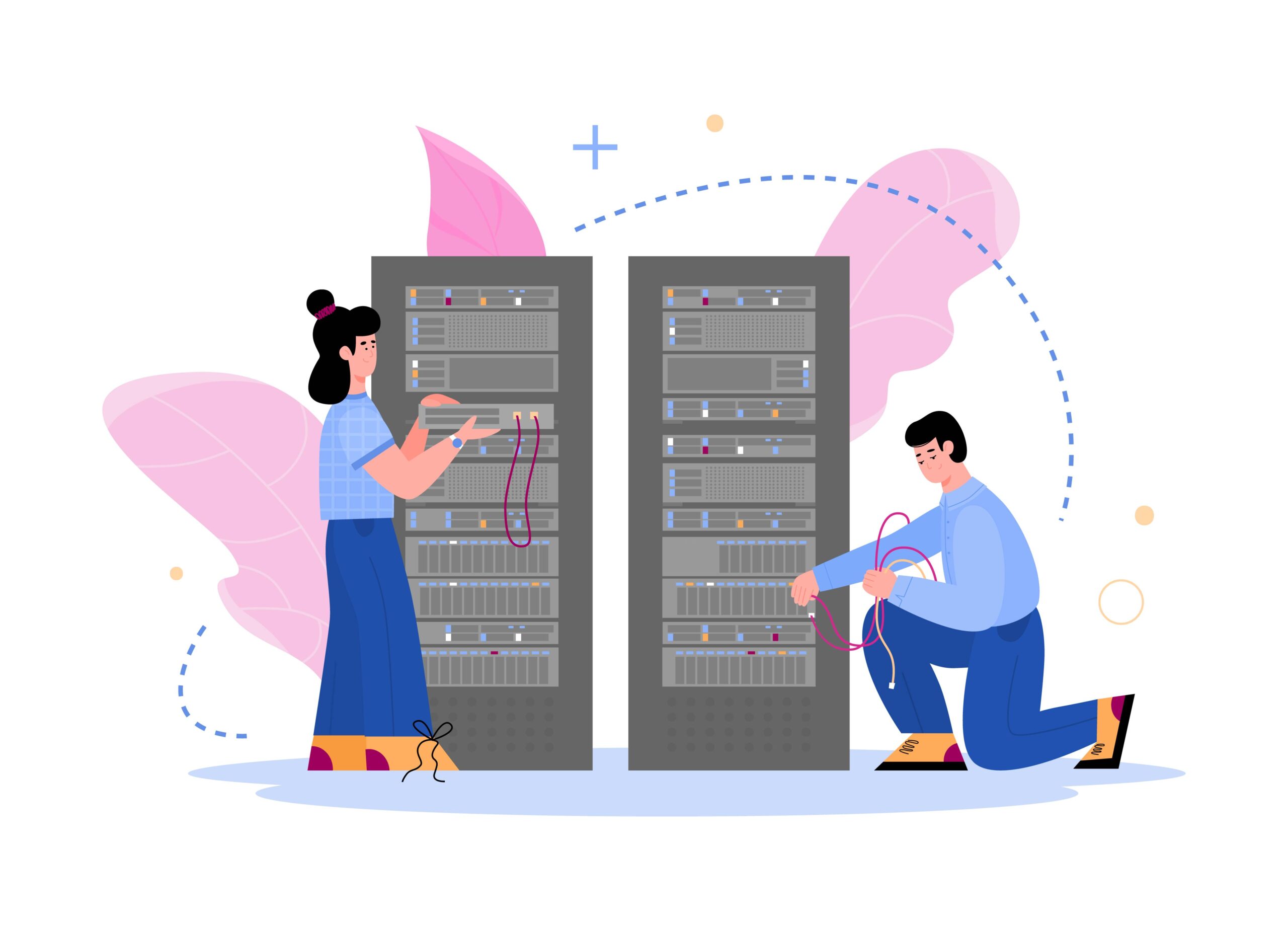Enterprise networks today face unprecedented pressures – exponential data growth, cloud adoption, mobile users, IoT devices, and security threats. Network traffic has become extremely dynamic, while uptime and security are non-negotiable. This complex landscape requires intelligent network management and control at scale – fueling immense innovation in managed switches.
What are Managed vs. Unmanaged Switch?
Network switches come in two primary forms – managed vs. unmanaged switches. Understanding the key differences in their features, capabilities, and operating models is essential for making the optimal choice for your infrastructure needs.
Unmanaged Switch
Unmanaged switches are the simpler of the two types. They are typically plug-and-play devices that do not require any manual configuration. This makes them ideal for straightforward networking needs, such as small home or office networks where basic connectivity is sufficient. Unmanaged switches operate at a basic level, forwarding data packets across the network without the ability to modify or manage the traffic. Due to their simplicity, they are generally more affordable and easier to use but offer limited functionality beyond basic network connectivity.
Managed Switch
Managed switches, on the other hand, provide a higher level of control over network traffic, allowing for the configuration, management, and monitoring of the network. They come with various features not found in unmanaged switches, such as the ability to create Virtual Local Area Networks (VLANs), implement Quality of Service (QoS) policies to prioritize traffic, and monitor network performance. Managed switch can be configured through a web interface, command line interface (CLI), or SNMP (Simple Network Management Protocol), providing flexibility in network management.
Managed vs. Unmanaged Switch: Features
Understanding the features and capabilities of managed vs. unmanaged switch is crucial for network planning and implementation. Here’s a comparison based on their primary features and capabilities:
Unmanaged Switch
- Plug and Play: Unmanaged switch are designed for simplicity, requiring no setup or configuration. They automatically connect devices on a network.
- Fixed Configuration: They come with a fixed configuration and do not allow any changes to the switch operation.
- Basic Functionality: The primary function is to provide connectivity among network devices. They forward packets without any modification or prioritization.
- No Network Management: There’s no interface for monitoring or modifying the network’s behavior. They lack SNMP, CLI, or web-based management interfaces.
- Cost-Effective: Generally less expensive than managed switches, making them suitable for small networks or where advanced features are not required.
Managed Switch:
- Configurable: Managed switches offer a high level of control over network traffic and settings. Users can configure IP addresses, create VLANs, adjust link speeds, and more.
- Advanced Features: They support features like QoS (Quality of Service) for traffic prioritization, VLANs for network segmentation, and network redundancy protocols to prevent network outages.
- Network Security: Managed switches provide enhanced security features like access control lists (ACLs), port security, and 802.1X authentication to secure the network against unauthorized access.
- Remote Management and Monitoring: They support SNMP, allowing for remote monitoring and management of the network. This includes access via CLI and web interfaces for real-time adjustments and troubleshooting.
- Scalability: Designed for scalability, managed switches can adapt to growing network demands, making them ideal for enterprise environments.
- Higher Cost: With advanced features and capabilities, managed switches are more expensive than unmanaged switches but offer greater flexibility and control over the network. When planning to Opt for Managed Switch, you should outsource IT consulting and support.
Managed Vs. Unmanaged Switch: Weighing the Tradeoffs
1. Cost
Cost is the most obvious differentiator. Managed switches require a steeper upfront investment, given their OS and silicon requirements, to enable extensive forwarding, monitoring, access control, and automation capabilities simultaneously. However, the total cost of ownership can ultimately be lower, given efficiencies gained in policy administration, troubleshooting, and recovery.
2. Ease of Use
Unmanaged switches suffice for standalone networks with simple architectures and limited user count where basic connectivity and self-contained performance are acceptable. Their plug-and-play nature also avoids steep learning curves.
3. Network Management and Control
For interdependent environments with greater scale, security vulnerabilities, and user expectations, like enterprises and industrial networks – managed switch provide indispensable visibility, security protections, and resilient connectivity.
4. Security
As infrastructure complexity and security threats increase exponentially, managed switch will continue pulling away as the standard for robust, efficient, and future-ready network foundations.
Final Considerations
- Internal Skillsets: Manageability requires networking expertise – factor required admin training into TCO. Consider managed service partnerships to augment internal teams.
- Interoperability: Ensure the managed switch OS and NMS supports integration protocols like sFlow, NETCONF for coherence across multi-vendor environments.
- Scalability: Analyze port densities, stacking support, and modular chassis capabilities when scoping managed switches for agility in handling user/device growth surges.
Migrate Confidently to Managed
While unmanaged switches retain a niche in barebones environments, enterprises today gain huge advantages in control, security, and efficiency by adopting managed alternatives purpose-built for intensifying network demands. Prioritize capabilities that align with long-term objectives, supplement skill gaps, and allow seamless integration with your existing infrastructure when selecting the ideal next-gen switch. Your network will thank you.
